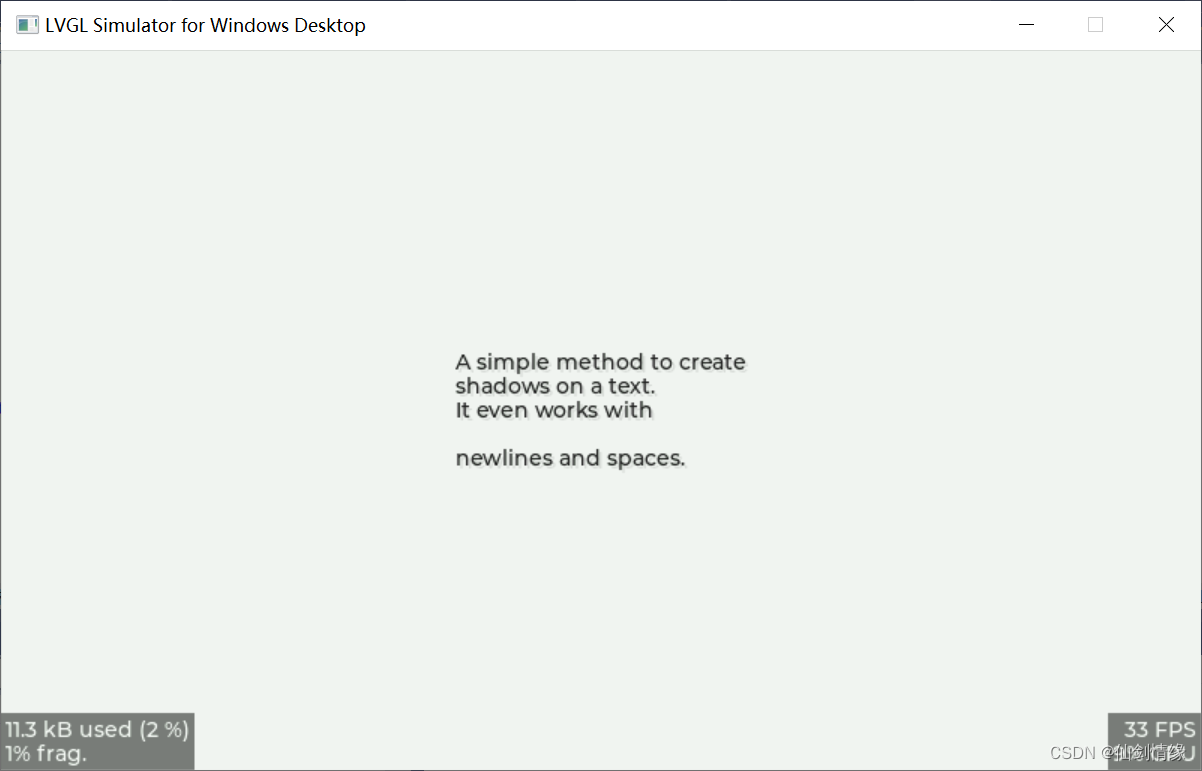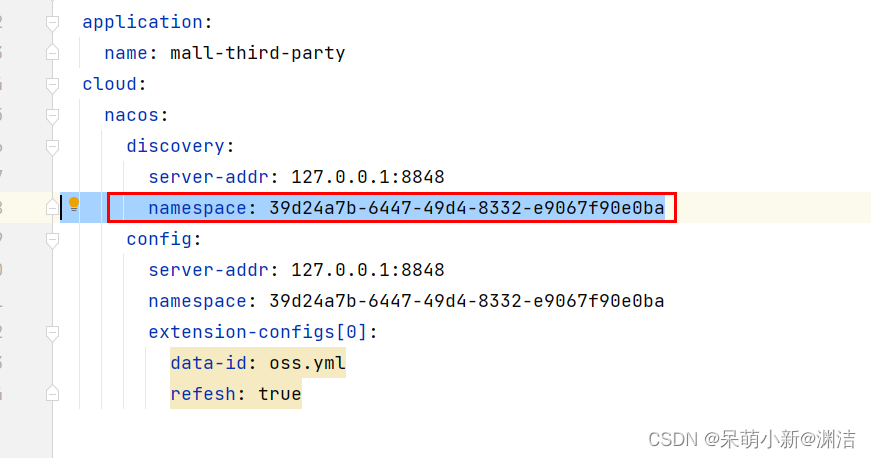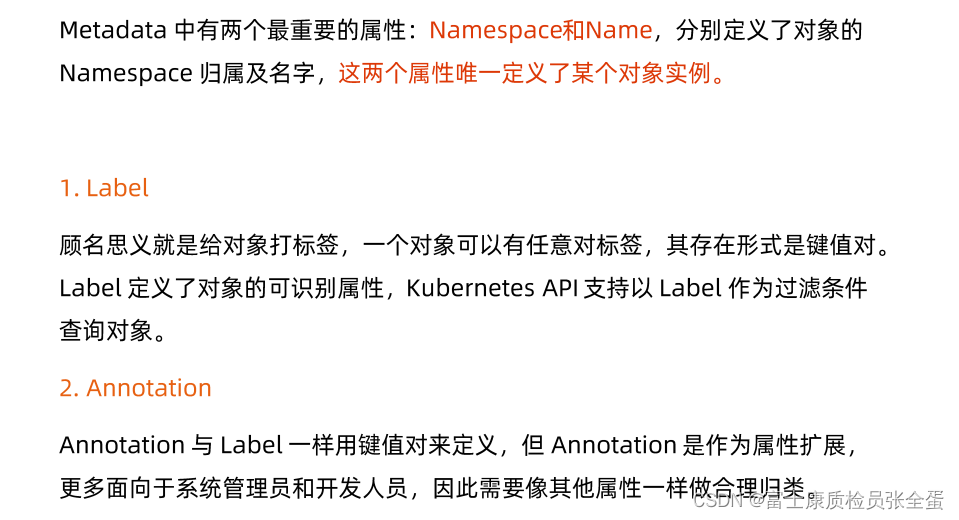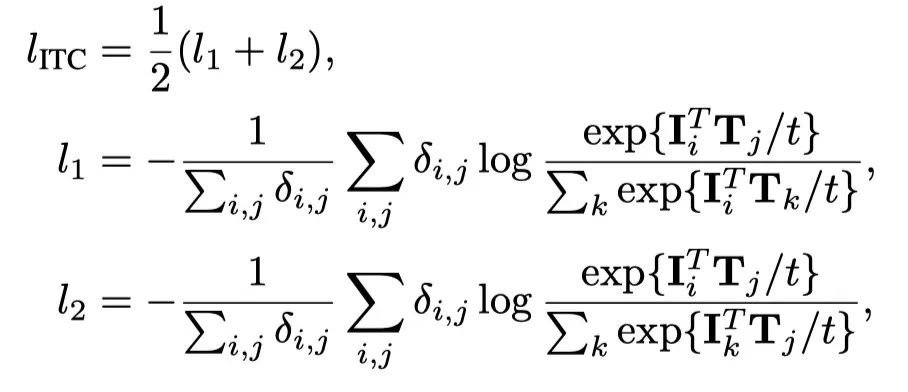当前位置:网站首页>Building intelligent gray-scale data system from 0 to 1: Taking vivo game center as an example
Building intelligent gray-scale data system from 0 to 1: Taking vivo game center as an example
2022-07-04 15:01:00 【Vivo Internet technology】
author :
vivo Internet data analysis team -Dong Chenwei vivo
Internet big data team -Qin Cancan、Zeng Kun
This paper introduces vivo Practical experience of game center in gray data analysis system , from “ Experimental ideas - Mathematical methods - Data model - Product plan ” The four levels provide a relatively complete set of intelligent gray-scale data solutions , To ensure the scientificity of version evaluation 、 Fast closed loop of project progress and gray level verification . The highlight of this scheme is , The introduction of index change root cause analysis method and the design of the whole process automation product scheme .
One 、 introduction
The user scale of the game business is large , The service link is long , Data logic is complicated . As the core user product of the game business platform , Version iterations are very frequent , Before each version goes online, a small amount of gray level verification must be carried out .2021 Since then , The average 1~2 Every week, there will be an important version of grayscale , And sometimes there are multiple versions of gray-scale testing online at the same time .
The whole process of grayscale mainly involves 3 A question :
- How to ensure the scientificity of version gray evaluation ?
- How to improve the output efficiency of gray data , Ensure the progress of the project ?
- When there is an abnormal index problem in the grayscale version , How to quickly locate the problem and complete the closed loop ?
In the past two years , We will gradually systematize the gray-scale evaluation method to agile BI And other data products , At present, the gray data system has solved this problem well 3 A question . This paper first paves the way with the basic concept and development process of version gray data system , Then with “ methodology + Solution ” As the main line, this paper expounds the practice of game center in gray data system , And look to the future .
Two 、 Development of gray data system
2.1 What is grayscale publishing
When the game center develops a new homepage interface , How to verify whether the new homepage is accepted by users , And whether the function is perfect 、 Whether the performance is stable ?
answer : Grayscale publishing . That is, before the new version is pushed to the full number of users , Select some users according to certain strategies , Let them experience the new homepage first , To get their information about “ The new homepage is easy to use or not ” as well as “ If it's not easy to use , What's wrong ” Using feedback . If there is a major problem , Rollback the old version in time ; On the contrary, it will check and fill the gaps according to the feedback results , And continue to enlarge the launch scope of the new version in due time until the full upgrade .
2.2 Development stage of gray scale evaluation scheme
The key to judge whether grayscale publishing is scientific is to control variables , The process of solving this problem , It is also the process of iteration and development of gray-scale evaluation scheme .

Stage 1 : Ensure that the comparison time is the same , However, the difference in upgrade speed means that the users who have priority to upgrade and the users who have not upgraded are not homogeneous users , Failed to avoid the impact of sample differences on data result differences .
Stage two : It ensures that the comparison group is the same , But user behavior may change over time , It is impossible to eliminate the difference of time factors before and after .
Stage three : At the same time, it ensures that the time is the same as the crowd , It has the following three advantages :
- Package the old version as a comparison package , Together with the new version of grayscale package , Release to two groups of homogeneous users , The sample properties of gray-scale package and comparison package are guaranteed 、 The time factor is consistent ;
- Calculate a reasonable sample size according to the product target , Avoid too few samples leading to unreliable results 、 Too much leads to waste of resources ;
- Rely on the silent installation function to quickly upgrade , Shorten the time of gray level verification .
2.3 Content of gray data system
Gray scale data systems usually involve Early flow strategy and Later data inspection 2 Parts of .
The former includes sample size calculation and grayscale duration control , The latter includes the comparison of core indicators between new and old versions 、 Data performance of index changes or new functions in product optimization . In addition to conventional gray scale evaluation , The introduction of root cause analysis can improve the interpretation of gray results .
2.4 vivo The practice of game center
We built “ Game center intelligent gray data system ”, And gradually solve the problem mentioned at the beginning of this article through three versions of iteration 3 A question . The data system consists of index test results 、 Dimension drill down interpretation 、 User attribute verification 、 It is composed of subject Kanban such as index anomaly diagnosis and gray conclusion report pushed automatically .
After the deployment of the complete scheme goes online , It basically realizes the automatic data production in the gray evaluation stage 、 Effect test 、 Closed loop of data interpretation and decision recommendations , It has greatly released manpower .
3、 ... and 、 Methodology in gray data system
Before introducing the data scheme design , First, introduce the background knowledge and methodology involved in the gray-scale data system , Help you better understand this article .
3.1 Gray scale experiment
Grayscale experiments include Sampling and effect inspection Two parts , Corresponding to the idea of hypothesis testing and the verification of historical differences of samples .
3.1.1 Hypothesis testing
Hypothesis testing is to put forward a hypothetical value for the overall parameters , Then use the sample performance to judge whether this hypothesis is true .

3.1.2 Verification of sample historical differences
Although the grayscale has been passed in advance hash Algorithm for sampling , But because of the randomness of sampling , Generally, statistical test and effect test are conducted at the same time , Verify the historical differences of samples , Eliminate the index fluctuation caused by the difference of the sample itself . The grayscale period is usually 7 God , We used 7 Sampling method of sliding window .

3.2 Root cause analysis
Gray scale indicators are often associated with multidimensional attributes ( Such as user attributes 、 Channel source 、 Page module, etc ) There is a connection , When the test results of indicators have abnormal significant differences , Want to remove the exception , Locating the root cause is a key step . However , This step is often challenging , Especially when the root factor is a combination of multiple dimension attribute values .
To solve this problem , We introduce the method of root cause analysis , In order to make up for the lack of interpretation of gray test results . We combine index logic analysis with Adtributor Algorithm 2 Methods , To ensure the reliability of the analysis results .
3.2.1 Index logical analysis
Because the index system constructed in the gray-scale experiment is basically rate value index or mean value index , These two kinds of indicators can be disassembled into two factors, numerator and denominator, through the indicator formula , The numerator and denominator of the indicator are obtained by adding the dimension values under each dimension . Therefore, it is proposed that Index logical analysis , Based on certain disassembly methods , From the index factor and index dimension 2 The index value is logically disassembled at three levels .

3.2.2 Adtributor Algorithm
In addition to the common dimension drilling method of root cause analysis , We introduced Adtributor Algorithm , To better deal with the situation of multi-dimensional combination impact indicators , And through the cross validation of the two methods to ensure the reliability of the analysis results .
Adtributor The algorithm was developed by Microsoft Research in 2014 An abnormal root cause analysis method of multidimensional time series proposed in , It has good reliability in the scenario of multi-dimensional complex root causes . The whole process of the algorithm includes data preprocessing 、 Anomaly detection 、 Root cause analysis and simulation visualization 4 A step , We mainly learn from the method of root cause analysis .

Four 、 Gray scale intelligent solution
4.1 The overall framework
Version grayscale can be divided into grayscale before - In gray - After grayscale 3 Stages , The overall framework of productization is as follows :

4.2 Process design
Based on the above framework , How do we design and implement ?
The following is a flowchart describing the whole process :

4.3 The core content of the scheme
4.3.1 Sample size estimation scheme
Kanban provides : Under multiple sets of confidence levels and test efficiency standards ( Default display 95% Degree of confidence 、80% Test performance ), According to the recent performance of the index , Predict the minimum sample size that the index can be detected significantly under different expected ranges of change .
The scheme has 3 Big feature :
- Output multiple sets of Standards , Flexibly adjust the expected range ;
- Automatically select the latest full version of data as data input ;
- The average index and rate value index adopt differentiated calculation logic .

4.3.2 Significance test scheme of effect index
The question that the index significance test model needs to answer is : The grayscale version is compared with the contrast version , Is the change of the index statistically believable or unbelievable .
at present , The grayscale version and the contrast version under three confidence levels are realized in 20 Significance judgment on business indicators .
The implementation process is as follows :
Rate value indicators
... ... # The following index data have been obtained variation_visitors # Denominator of grayscale version index control_visitors # The denominator of the comparison version indicator variation_p # Grayscale version index value control_p # Compare the version index value z # Different confidence levels (90%/95%/99%) Under the z value , Business mainly focuses on 95% Significant test results at confidence level # Calculate the standard deviation of the index variation_se = math.sqrt(variation_p * (1 - variation_p)) control_se = math.sqrt(control_p * (1 - control_p)) # Calculate the index change value and change rate gap = variation_p - control_p rate = variation_p / control_p - 1 # Calculate the confidence interval gap_interval_sdown = gap - z * math.sqrt(math.pow(control_se, 2) / control_visitors + math.pow(variation_se, 2) / variation_visitors) # Lower bound of confidence interval of change value gap_interval_sup = gap + z * math.sqrt(math.pow(control_se, 2) / control_visitors + math.pow(variation_se, 2) / variation_visitors) # Upper bound of confidence interval of change value confidence_interval_sdown = gap_interval_sdown / control_p # Lower bound of the confidence interval of the rate of change confidence_interval_sup = gap_interval_sup / control_p # Upper bound of confidence interval of change value # Significance judgment if (confidence_interval_sdown > 0 and confidence_interval_sup > 0) or (confidence_interval_sdown < 0 and confidence_interval_sup < 0): print(" remarkable ") elif (confidence_interval_sdown > 0 and confidence_interval_sup < 0) or (confidence_interval_sdown < 0 and confidence_interval_sup > 0): print(" No significant ")... ...Average index
... ... # The following index data have been obtained variation_visitors # Denominator of grayscale version index control_visitors # The denominator of the comparison version indicator variation_p # Grayscale version index value control_p # Compare the version index value variation_x # Gray version single user index value control_x # Compare the single user index value of the version z # Different confidence levels (90%/95%/99%) Under the z value , Business mainly focuses on 95% Significant test results at confidence level # Calculate the standard deviation of the index variation_se = np.std(variation_x, ddof = 1) control_se = np.std(control_x, ddof = 1) # Calculate the index change value and change rate gap = variation_p - control_p rate = variation_p / control_p - 1 # Calculate the confidence interval gap_interval_sdown = gap - z * math.sqrt(math.pow(control_se, 2) / control_visitors + math.pow(variation_se, 2) / variation_visitors) # Lower bound of confidence interval of change value gap_interval_sup = gap + z * math.sqrt(math.pow(control_se, 2) / control_visitors + math.pow(variation_se, 2) / variation_visitors) # Upper bound of confidence interval of change value confidence_interval_sdown = gap_interval_sdown / control_p # Lower bound of the confidence interval of the rate of change confidence_interval_sup = gap_interval_sup / control_p # Upper bound of confidence interval of change value # Significance judgment if (confidence_interval_sdown > 0 and confidence_interval_sup > 0) or (confidence_interval_sdown < 0 and confidence_interval_sup < 0): print(" remarkable ") elif (confidence_interval_sdown > 0 and confidence_interval_sup < 0) or (confidence_interval_sdown < 0 and confidence_interval_sup > 0): print(" No significant ")... ...The Kanban is shown below :

4.3.3 Negative indicator automatic root cause analysis scheme
The automatic root cause analysis scheme for negative indicators of gray-scale scenes includes change detection 、 Verification of sample historical differences 、 Index logic disassembly and Adtributor Automatic root cause analysis 4 A step .

among ,Adtributor Automatic root cause analysis can calculate the factor that contributes the most to the indicator change in the dimension of the same level , We adapt to specific indicator business scenarios by layering indicator dimensions and setting relationships , Build a logical model of multi-level attribution Algorithm , So as to realize the automatic output of business level root cause conclusion .

The Kanban is shown below :

4.3.4 Gray scale report intelligent splicing push scheme

Automatic acquisition of version information content :
Get the version number through the publishing platform 、 Actual loading 、 Cumulative number of days of release and version related content , As the beginning of the grayscale report .
The conclusion is that :
According to whether the indicators are all positive / Partially negative / All negative 、 Whether the statistical results such as uneven samples are automatically combined and mapped to the preset conclusion document , A total of 10 Various conclusion templates .
Interpretation of significance test of core indicators ( According to different gray levels , Interpret different types of indicators ):
- T+1~T+2: Performance indicators 、 Activity rate index
- T+3~T+6: Active performance indicators 、 Distribute performance indicators 、 Download installation process conversion indicators
- T+7: Active performance indicators 、 Distribute performance indicators 、 Download installation process conversion indicators 、 The latter transformation indicators
Interpretation of the attribution of the first level module dimension :
If the grayscale version has clearly input the specific change points to a level-1 module in the early stage , The module will be interpreted automatically , And output the data of other modules with index differences ; If the grayscale version does not input the change points at the module level , On the output indicators, the effect is remarkable ( Positive significant 、 Negative significant ) The interpretation conclusion of the first level module .
Interpretation of sample size uniformity :
Business indicators , Judge whether the distribution is uniform by significance test ; Non business indicators , Judge by distribution differences .
Interpretation of negative diagnosis :
According to the results of the multi-level automated root cause model , Modifiers mapped according to different dimension types 、 Dimension quantity positioning ( One dimension / multidimensional ) And the conclusion of sample historical difference verification , Corresponding to different templates , Finally, the negative diagnosis copy is spliced .
5、 ... and 、 At the end
Requirements for scientific evaluation and rapid decision-making in business gray-scale publishing , We combine a variety of methods , from “ Experimental ideas - Mathematical methods - Data model - Product plan ” The four levels provide a relatively complete solution of intelligent gray-scale data system .
This paper hopes to provide reference for the construction of gray data system in business , However, it should be reasonably designed in combination with the characteristics of each business . The data model design involved in the scheme is not introduced in detail here , Interested students are welcome to discuss learning with the author .
Besides , Gray data system still needs to be improved , Throw it out here first , Some of them are also being studied and solved :
- When gray traffic is grouped , It usually adopts the method of random grouping . But because of completely random uncertainty , After grouping ,2 Group samples may naturally be unevenly distributed in some index characteristics . Compared with the post sample uniformity verification method , Stratified sampling can also be considered to avoid this problem ;
- In the process of gray index analysis , There is still room for improvement in the automatic multidimensional root cause analysis model , At present, the model is very dependent on the comprehensiveness of the dimensions in its own data source , And only quantitative reasons can be detected . Later, we hope to put the quantitative root cause model , Combine qualitative factors for a more comprehensive and accurate interpretation ;
- At present, the whole gray-scale solution of the game center is essentially based on 2 sample-test Test model , However, the model needs to improve the core indicators according to the expected improvement of the gray version compared with the comparative version , To estimate the minimum sample size in advance , In the actual grayscale process, the core index may not reach the expected situation . Try it in the future mSPRT And other inspection methods , Weaken the limitation of minimum sample size on significant results .
reference :
- Mao Shisong , Wang Jinglong , Pu Xiaolong . 《 Advanced mathematical statistics ( The second edition )》
- It's Lao Li, that's right . 《 Five minutes to master AB Principle of experiment and sample size calculation 》. CSDN Blog
- Ranjita Bhagwan, Rahul Kumar, Ramachandran Ramjee, et al. 《Adtributor: Revenue Debugging in Advertising Systems》
边栏推荐
猜你喜欢

LVGL 8.2 text shadow

92. (cesium chapter) cesium building layering
![LeetCode 1200 最小绝对差[排序] HERODING的LeetCode之路](/img/4a/6763e3fbdeaf9de673fbe8eaf96858.png)
LeetCode 1200 最小绝对差[排序] HERODING的LeetCode之路

近一亿美元失窃,Horizon跨链桥被攻击事件分析

Who the final say whether the product is good or not? Sonar puts forward performance indicators for analysis to help you easily judge product performance and performance

Alcohol driving monitoring system based on stm32+ Huawei cloud IOT design

No servers available for service: xxxx

Kubernets pod exists finalizers are always in terminating state

UFO:微软学者提出视觉语言表征学习的统一Transformer,在多个多模态任务上达到SOTA性能!...

Guitar Pro 8win10 latest guitar learning / score / creation
随机推荐
LVGL 8.2 text shadow
Deep learning network regularization
深度学习 神经网络的优化方法
When synchronized encounters this thing, there is a big hole, pay attention!
SAIC Maxus officially released its new brand "mifa", and its flagship product mifa 9 was officially unveiled!
进制乱炖
浮点数如何与0进行比较?
C language programming
Redis publier et s'abonner
Leetcode 1200 minimum absolute difference [sort] The Path of leetcode for heroding
Guitar Pro 8win10最新版吉他学习 / 打谱 / 创作
Deep learning 7 transformer series instance segmentation mask2former
Techsmith Camtasia Studio 2022.0.2屏幕录制软件
Red envelope activity design in e-commerce system
输入宽度!
炒股网上开户安全吗?会不会被骗。
Openresty redirection
The performance of major mainstream programming languages is PK, and the results are unexpected
Combined with case: the usage of the lowest API (processfunction) in Flink framework
LVGL 8.2 Menu